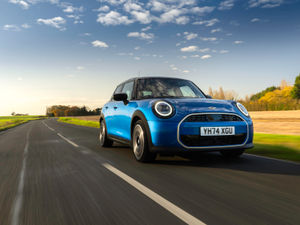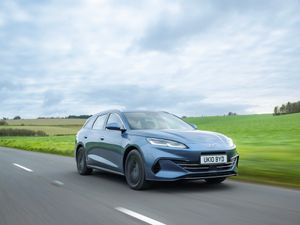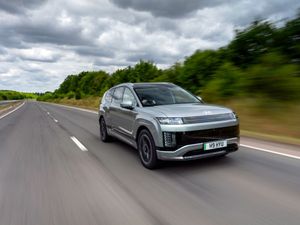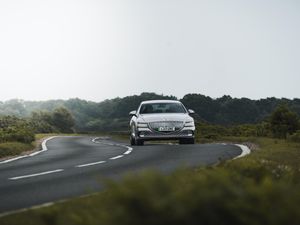First Drive: The Alpine A110 R is the most extreme version of this sports car yet
Alpine looks to create a track weapon still usable for the road with its A110 R. Ted Welford finds out if it succeeds
What is it?
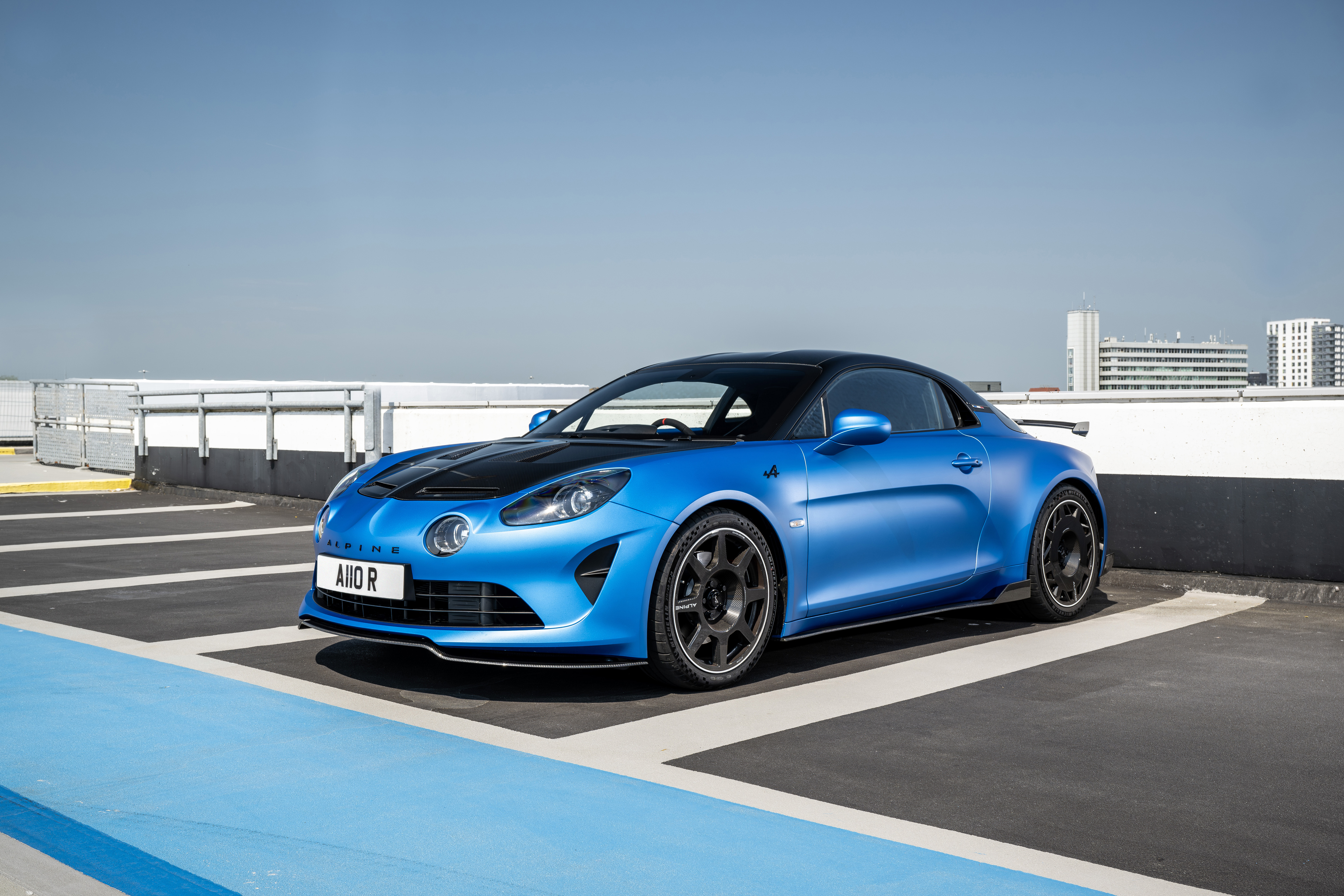
Sports car manufacturers love creating lighter, more extreme special editions and charging for the privilege. Porsche and Lotus have been doing it for years, and now Alpine wants to do the same with the A110.
Alpine is a lesser-known firm, which was revived in 2018 as Renault’s sporty arm, and has gained quite a reputation for its light and agile A110. There have been numerous versions of this sports car that have led to the A110 R – the lightest, most aggressive and track-focused Alpine yet.
What’s new?
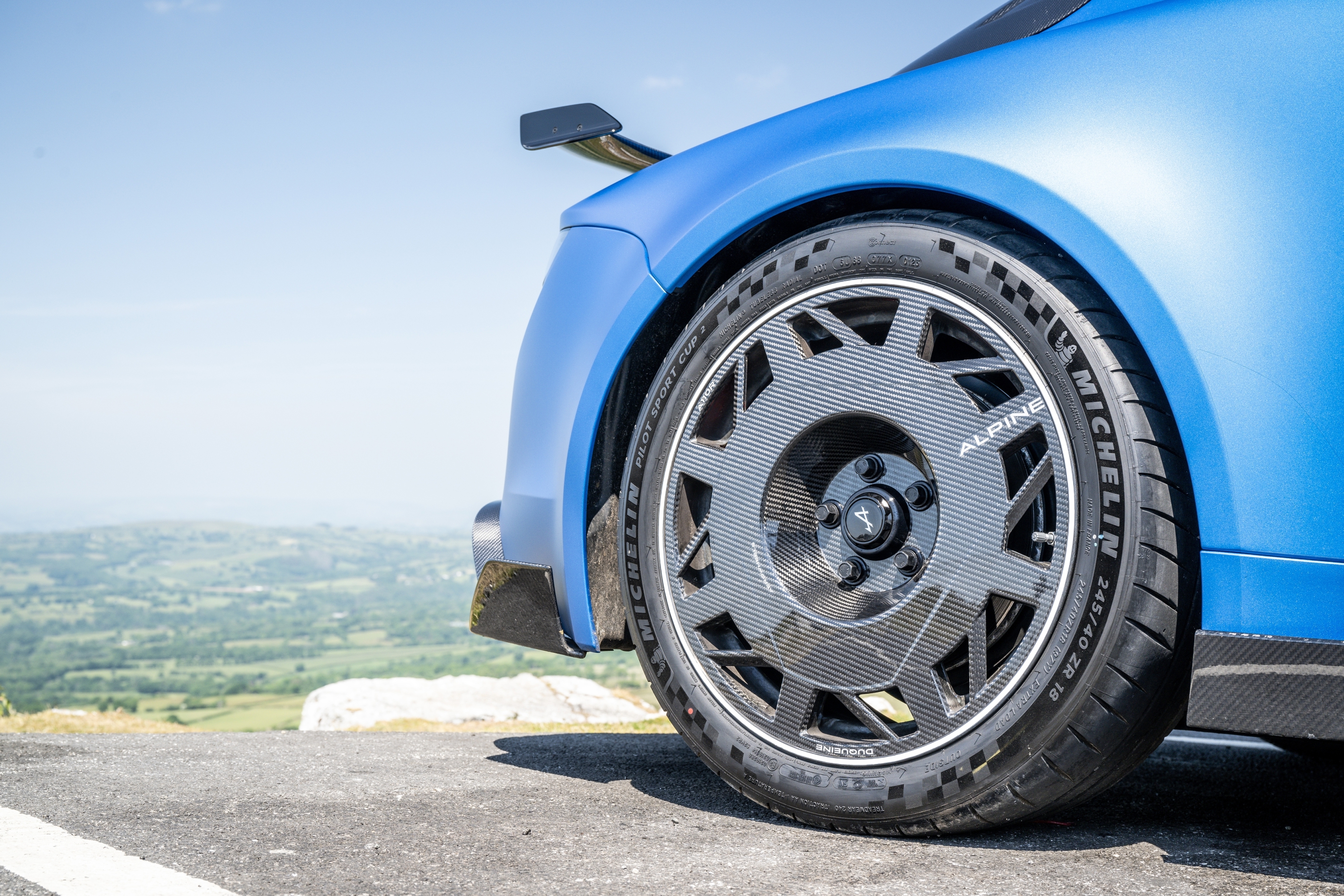
The R uses the A110 S as its base, adopting that car’s more powerful engine, and then has looked to shed weight. The standard car is hardly heavy, but thanks to a range of measures, Alpine’s managed to shave 34kg from it, while still retaining pleasant niceties like a touchscreen and climate control.
Some of the stand-out differences you’ll notice are its mismatched carbon wheels, which look different at the rear to the front – a proper racing car trait – as well as the bonnet and rear window section being replaced by carbon fibre. There are also manually adjustable coilovers, though as per factory settings, the A110 R sits lower and is stiffer than the standard car.
What’s under the bonnet?
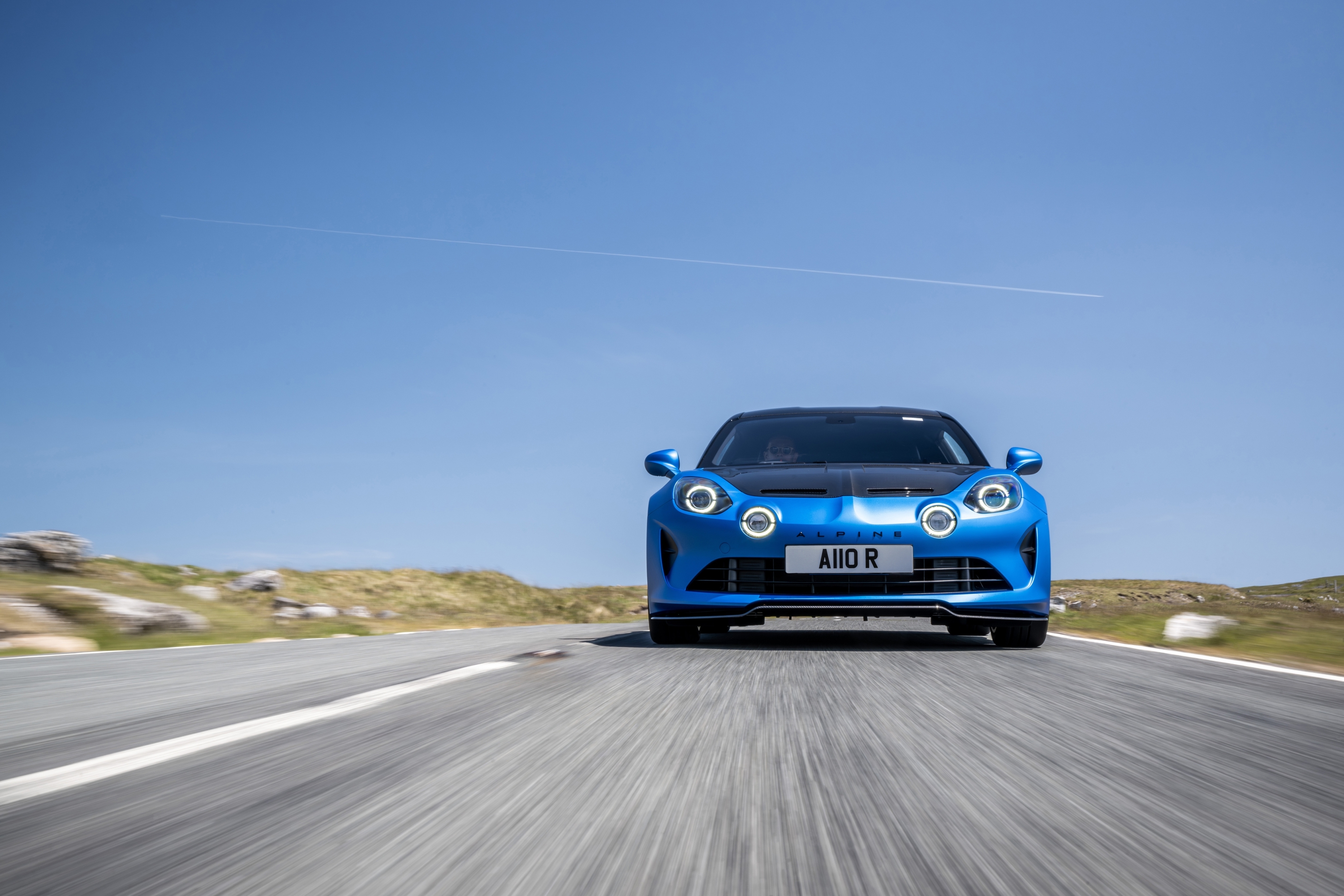
One thing Alpine hasn’t changed with the A110 R is what it’s powered by, which is the same mid-mounted 1.8-litre turbocharged petrol engine as that in the A110 S and previous Renaultsport Megane hot hatches. Drive is sent to the rear wheels through a seven-speed dual-clutch automatic gearbox too – Alpine has never offered a manual option on the A110.
The 296bhp and 340Nm might seem fairly modest in this day and age, but it’s worth remembering the low weight here, and even still the A110 R can manage 0-60mph in 3.7 seconds (three tenths of a second less than the ‘S’) and head onto a top speed of 177mph. Thanks to the Alpine’s small engine and lightness, it’s also nowhere near as expensive to run as you might anticipate a sports car of this ilk to be – with a claimed fuel economy figure of 41.5mpg and 155g/km CO2 emissions.
What’s it like to drive?
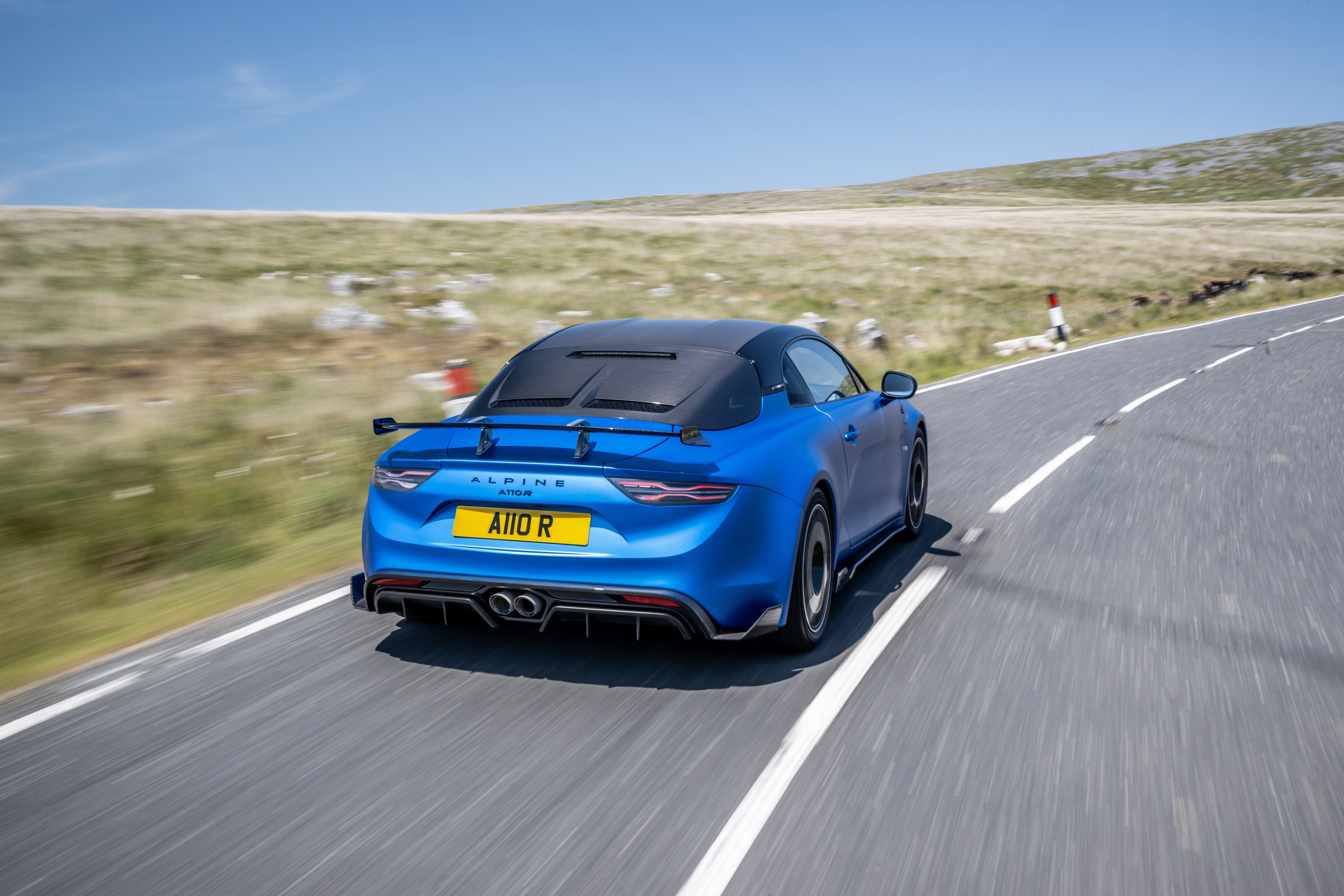
From the moment you get into the one-piece Sabelt bucket seats and strap yourself in with the six-point race harnesses, you know the A110 R means business – almost excessively for a road car.
The low-speed ride is brittle but when you gather speed it becomes more compliant, almost impressively so for a car with such track focus. But the A110 R’s steering – like the standard car – is just exceptional. It’s super quick and direct – point and turn and it does just that. Few can make a car that’s as much fun down a British B-road as this.
The engine is perhaps not quite special enough for a £100,000 car, but the dual-clutch ‘box changes gears rapidly, and is accompanied by a more raucous sports exhaust system with 3D-printed elements that in the ‘Sport’ driving mode is childishly loud (in a good way) with an amass of pops and crackles as it downshifts.
How does it look?
The standard A110 is known for its clean, uncluttered lines, but the R is a far cry from that. It’s as if Renault did a deal with a carbon-fibre manufacturer to get as much of it on the car as possible – it’s used for the bonnet, roof, wheels, side skirts and splitters and even the rear glass is replaced by a carbon-fibre panel.
It might be a far cry from the standard A110, but it certainly looks purposeful, with the revised ‘swan-neck spoiler’ giving it the true look of a road-legal race car. Our test car also came painted in a cool ‘Matte Racing Blue’ finish, albeit for a rather steep £6,000.
What’s it like inside?
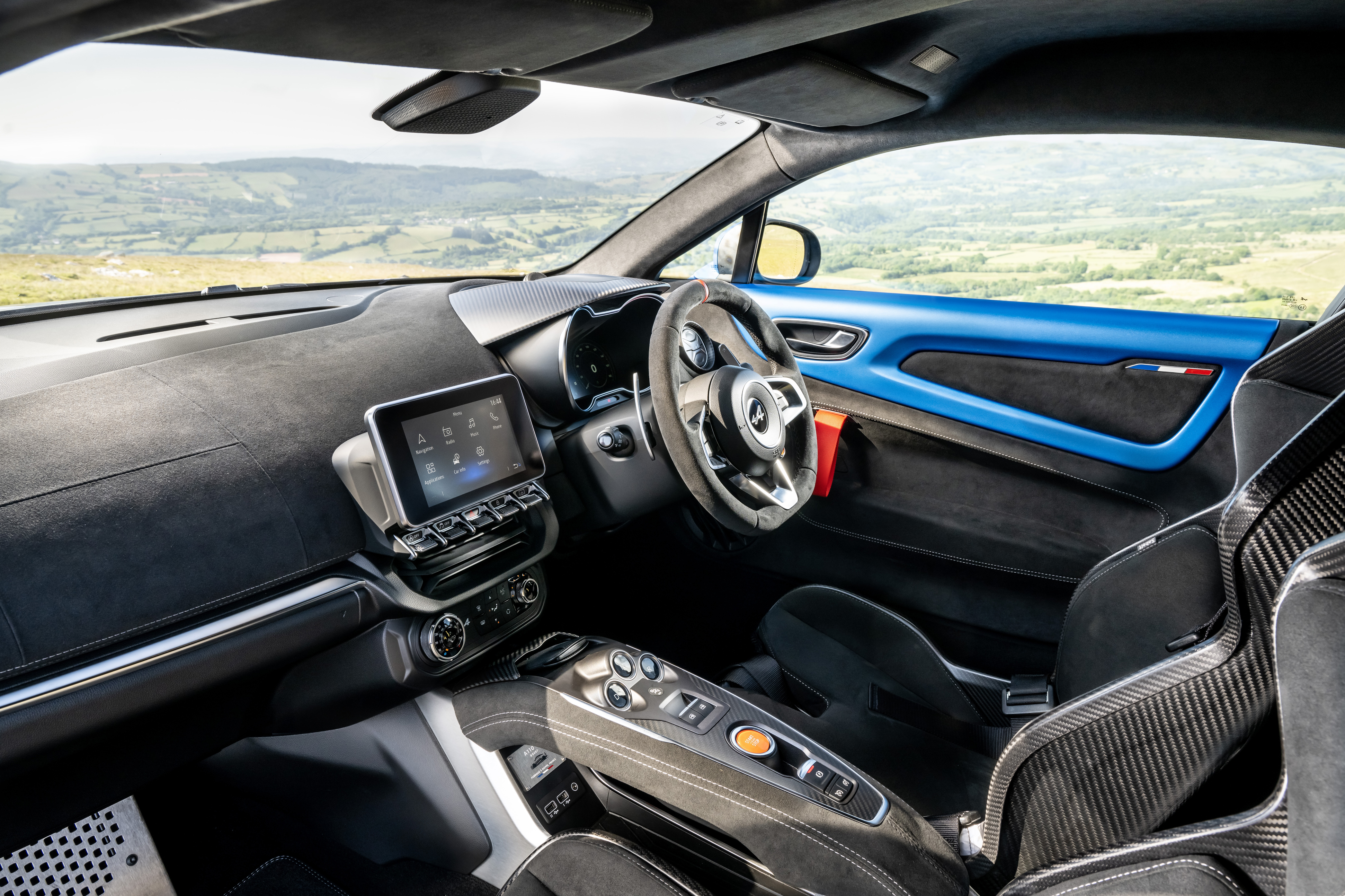
The key change inside compared to the ‘S’ are those single-piece Sabelt bucket seats. These alone save 5kg, and while they’re not the easiest to climb in and out of, they’re surprisingly comfortable once you’re in – even for several hours driving at a time. If you’re buying the A110 R to use on the road, the standard race harnesses are just a bit overkill, though, and the combination of being pinned to the seat and no rear window means visibility is quite compromised.
Microfibre adorns pretty much every possible inch of the interior, from the roof to the dashboard and steering wheel, while the painted matte blue finish of the top section of the doors looks superb too. The Alpine is compromised when it comes to luggage space, though, with a tiny boot area in the back and though there’s a box area under the bonnet, you’d struggle to fit even a small suitcase in.
What’s the spec like?
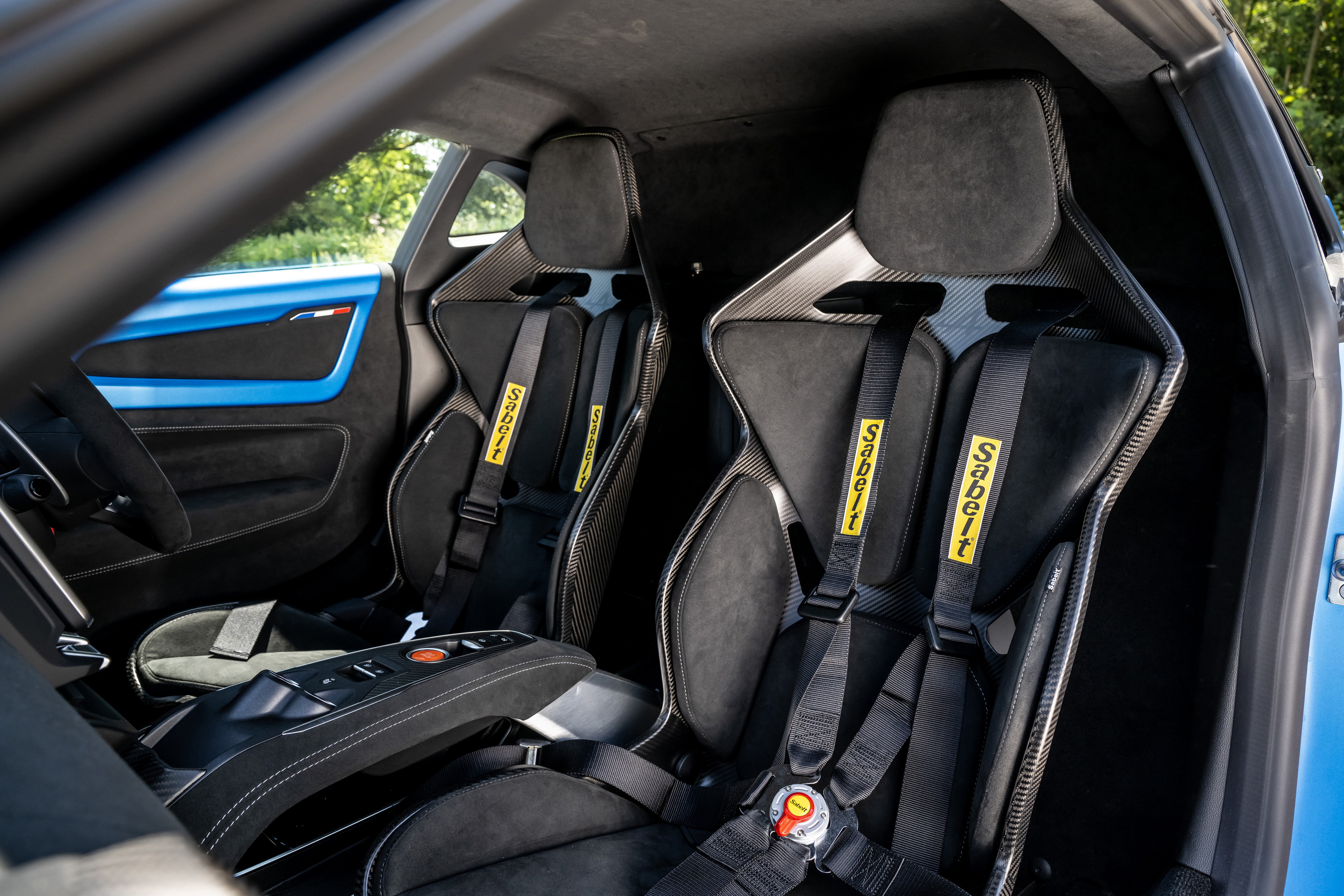
While we’ve talked a lot about carbon-fibre, which isn’t cheap, there are still plenty of everyday creature comforts in the A110 R. In this respect, it hasn’t been fully stripped out, with features like climate control, a Focal sound system and cruise control all included, along with a digital instrument cluster. The actual climate settings and main touchscreen are borrowed from an old Clio, however.
Admittedly this is a track special edition done properly – and all that carbon-fibre doesn’t come cheap, with the wheels alone rumoured to cost £8,000 – but at £96,990, the A110 R is fiercely expensive. Even more so when you consider the A110 S it’s based on is available for £30,000 less.
Verdict
The A110 R is unquestionably the most aggressive and purposeful version of the Alpine A110 yet. From its racing seats to its wild styling, it adds a different dimension to everything we’ve seen from this firm so far, while still retaining the on-road brilliance that the standard car is renowned for.
For anyone looking to take their car to the track, the A110 R is the version to go for. But for road use, the awkward racing harnesses and limited visibility might just prove more of an annoyance than a benefit. If you want the ultimate A110, the R is the one, but we reckon at £30,000 less for the A110 S, that is where our money would go.


